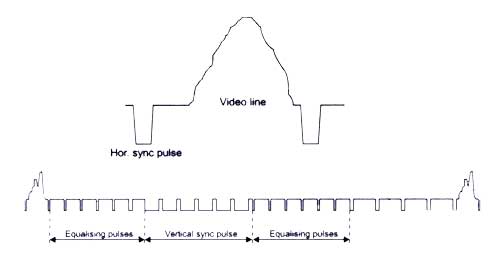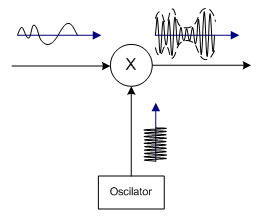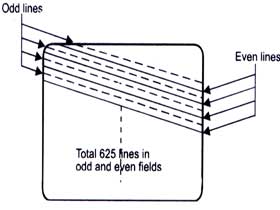In order to understand the structure of a PAL/NTSC signal, it's a good idea to understand the structure of a grayscale image signal first. The reason is that PAL and NTSC needed to be downward compatible and therefore interpretable by older b/w TV sets.
To keep writing simpler I will continue to only use "PAL" instead of "PAL/NTSC" and will add the distinction when needed.
 Grayscale TV signals only transmit the brightness - the luma - of the image. This is simply encoded in the strengt of the signal. The higher the voltage, the brighter the point in the image. The way the image is build up is by multiple scan lines. You draw many lines one after the other and you get an image.
Grayscale TV signals only transmit the brightness - the luma - of the image. This is simply encoded in the strengt of the signal. The higher the voltage, the brighter the point in the image. The way the image is build up is by multiple scan lines. You draw many lines one after the other and you get an image.
 Each line is a waveform which represent the luma along the line. To keep the image aligned with the screen, h-sync ans v-sync pulses are used.
Each line is a waveform which represent the luma along the line. To keep the image aligned with the screen, h-sync ans v-sync pulses are used.
To maintain a high resolution and a high frame rate of 50 fps, the simple trick of interlacing lines is use. This means, that in the first 20ms only the odd lines are drawn and in the next 20ms the even ones. The only drawback of this is that motion blurr is now more visible and a scene change not as smooth.

Transmission of the signal is done by amplitude modulating it onto a carrier wave.
"In amplitude modulation, the amplitude (signal strength) of the carrier wave is varied in proportion to the waveform being transmitted." - Wikipedia
In digital signal processing this can be done by multiplying both signal.
 marble
marble
Discussions
Become a Hackaday.io Member
Create an account to leave a comment. Already have an account? Log In.